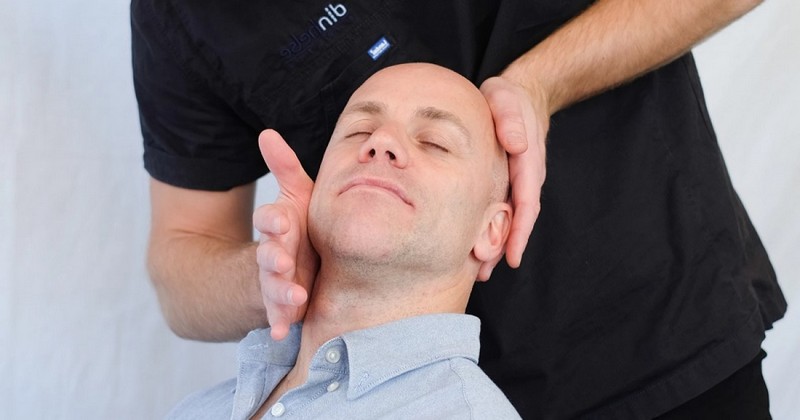What is the Health Belief Model?

This explanatory model talks about what leads people to take care of their health or not to do so.
Health psychology has been gaining more and more strength in recent years. Matarazzo (1980) was one of its promoters, defining what a health behavior was. On this occasion we will learn about Becker and Maiman's Health Belief Model..
This model includes an important cognitive/perceptual component in the evaluation of the possibility of becoming ill. But, what does it depend on if we adopt healthy habits or behaviors? Let's find out in this article.
Health behaviors
A health behavior is, according to Kasl and Cobb, that behavior oriented to prevent a disease. According to Matarazzo, such behaviors decrease behavioral pathogens and increase behavioral immunogens.. The variables that influence the adoption of health behaviors are: social context, symptom perception, emotional states and beliefs about health.
Health Belief Model: characteristics
The Health Belief Model was proposed by Becker and Maiman in 1974. These authors formulated the model, although around the 1950s a group of specialists in social psychology in North America had already developed the first hypotheses, seeking an explanation for the lack of public participation in early detection and disease prevention programs.
The model proposes that a person's willingness to adopt a health behavior will be determined by two factors: the perception of susceptibility to illness and the perceived severity of the consequence of the disease..
Components
The Health Belief Model is made up of three groups of elements or components. Let's see what they are.
Individual perceptions
These, in turn, are made up of two elements already mentioned: susceptibility to getting sick (or the risk of getting sick) and the perceived severity in relation to the consequences of the disease. These perceptions directly influence the threat perceived by the subject himself.
In relation to the perception of susceptibility or risk, studies with adolescents have concluded that some people who engage in behaviors conducive to HIV transmission, such as unprotected intercourse, (risky actions) do not perceive themselves as being at greater risk of contracting AIDS than others who do not engage in such actions. This is quite alarming.
On the other hand, and also in relation to HIV/AIDS, some studies have shown that the belief that modern technology will soon be able to find a cure for HIV/AIDS has a direct correlation with the practice of risky behaviors, also alarming data.
Thus, we see how the perception of risk to which one is or has been exposed can be a conditioning factor for behavior. This perception may be related to the idea that one has of one's partner and of what fidelity means, and will be influenced by age, sexual tendency, self-image, cultural and intellectual factors, etc.
All these elements can be identified and adequately addressed in psychoeducational interventions..
Modifying factors
These factors are made up of two types of variablesThe modifying factors are: demographic and psychosocial variables (e.g. place of residence, age, sex, etc.), and beliefs that are key to action (e.g. preventive campaigns, advice, etc.).
Like individual perceptions, modifying factors influence the subject's perceived threat of becoming ill.
3. Probability of action
The probability of action (i.e. the probability of acting, of adopting a health behavior to prevent disease) depends on the benefits and the costs or barriers involved in engaging in such behavior or not.
Thus, in addition to perceiving a threat to his or her health and the seriousness of the consequences, the person must also believe that he/she is capable of producing certain changes or modifications in his/her behavior, and that such initiative(s) will produce certain benefits.and that such initiative/s will produce greater benefits than disadvantages or harm (derived from the effort required to achieve them).
Premises of the Model
To summarize, we can group the three basic premises of the Health Belief Model:
- The belief -or perception- that a given problem is important or serious enough or serious enough to be taken into consideration.
- The belief -or perception- that one is vulnerable or susceptible to that problem.
- The belief -or perception- that the action to be taken will produce a benefit at an acceptable personal cost. will produce a benefit at an acceptable personal cost (i.e., greater benefits than costs).
Example
Let's think of an example: the case of tobacco addiction. To adopt a health behavior, we must first perceive that we are susceptible to getting sick (e.g. when we cough a lot while puffing on a cigarette) and we must also perceive the severity of the consequences in case of getting sick (e.g. dying from lung cancer).
Thus, the health behavior would be to quit smoking, and the more powerful the perceptions (of susceptibility and severity) we have, the more likely we are to adopt the health behavior.
Health motivation
Becker and Maiman later add to the Health Belief Model a new factor: health motivation, which is directly related to theories of motivation.
Applications of the model
The Health Belief Model has been used as a psychoeducational tool in population-based HIV/AIDS preventive interventions. in preventive interventions against HIV/AIDS and other pathologies..
Bibliographical references:
- Matarazzo, J D. (1980): Behavioural health and behavioural medicine. Frontiers of a new health psychology. American Psychologist, 35, 807-817.
- Johnston, M. (1990). HEALTH PSYCHOLOGY: EUROPEAN PERSPECTIVES. Papers of the Psychologist, 1, 46-47.
- Soto, F. Lacoste, J., Papenfuss, R. and Gutierrez, A. (1997). THE HEALTH BELIEF MODEL. A THEORETICAL APPROACH TO AIDS PREVENTION. Rev. Esp. Public Health,71(4).
- Amigo, I. (2012). Manual de Psicología de la Salud. Madrid: Pirámide.
(Updated at Apr 13 / 2024)